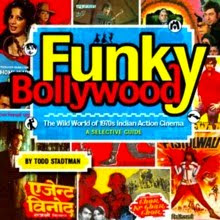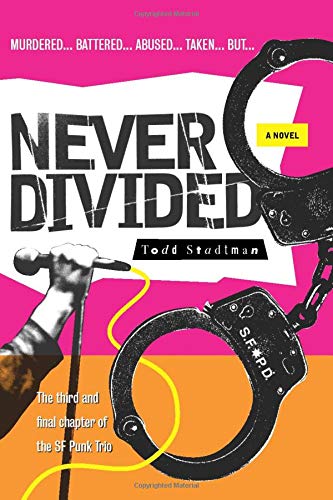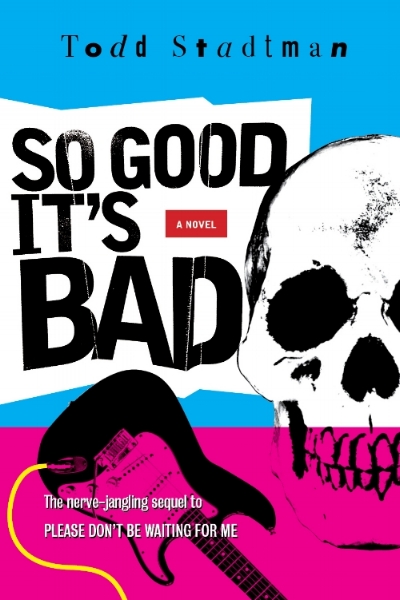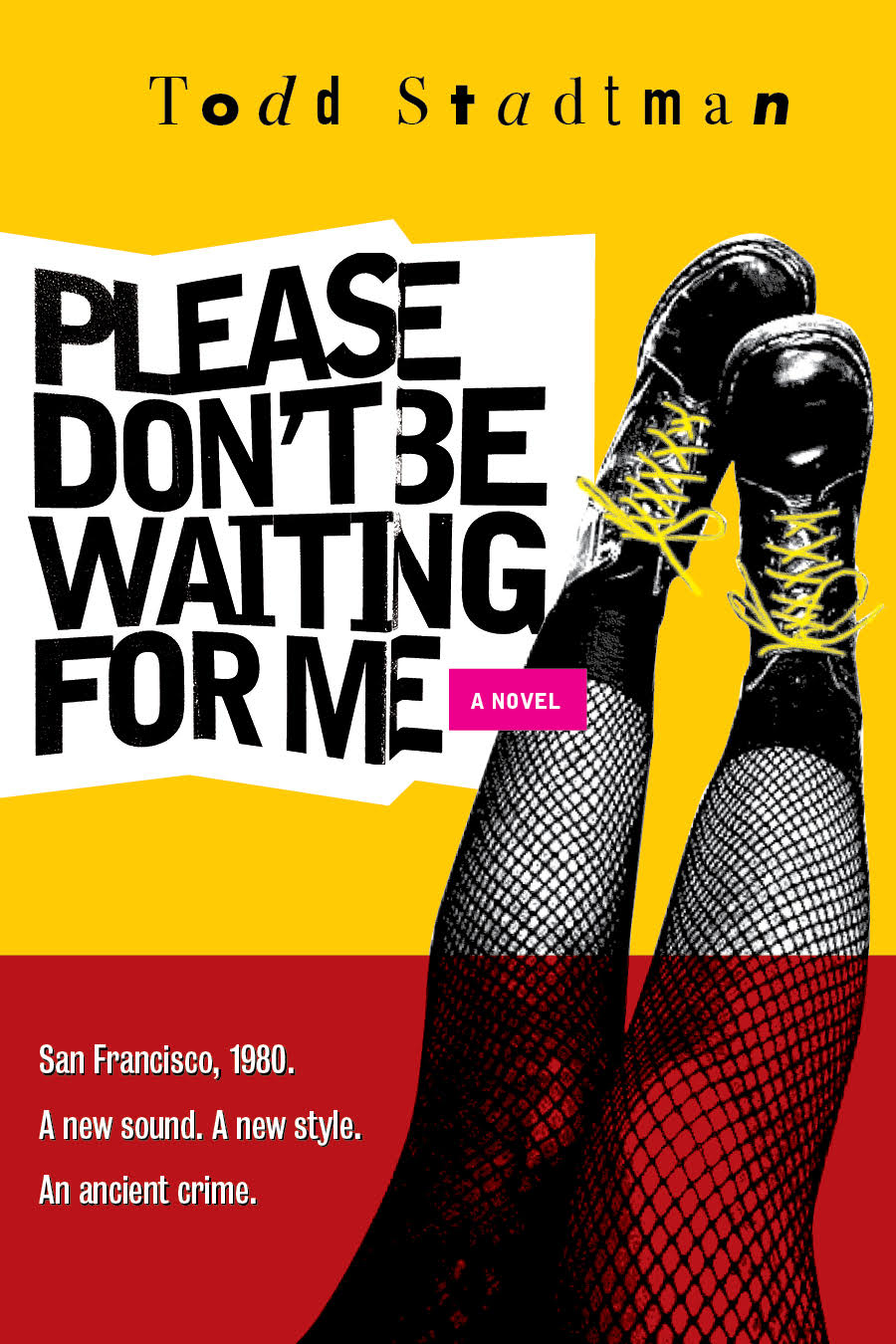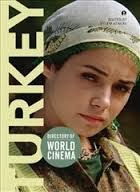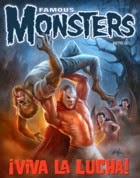The cavalcade of guest stars continues here at 4DK while I nurture my budding prehensile tail. This week finds my fellow Infernal Brain and host of the jawesome TarsTarkas.NET, Tars Tarkas, stepping outside of his comfort zone.
It has come to my attention that certain people believe that I only review films with "Bikini" in the title. Nothing could be further from the truth! At TarsTarkas.NET, I strive to cover a diverse range of cinema from all corners of the square globe, regardless of words in their titles. And to prove it, this guest post will cover that Mexican music-saturated comedy, Bikinis Y Rock. Oh, son of a ---
Bikinis Y Rock features a lovable loser and his more lovable more loser friend as they save his dad's clothing company thanks to the power of bikinis. But a rival bikini company has them in their targets. If you think this sounds vaguely familiar, that's because Bikinis Y Rock is a remake of a prior film called A Ritmo de Twist! Yes, Mexico did a reverse Rock Around the Clock/Twist Around the Clock! Both films feature famed comedian Manuel "El Loco" Valdés, brother of Germán "Tin Tan" Valdés and "Don Ramón" Valdés. El Loco starred in A Ritmo de Twist, but this time out Valdés plays a loopy cult leader along with some of his fellow tv comedians.
Bikinis Y Rock is one of those movies where bands are constantly performing at parties that go on forever and everyone dances. Unlike real parties, where people just stand around holding red plastic cups until it's time to run to the yard to vomit. Said bands and parties take place at a commune run by El Loco's guru character, who looks like a mugshot you'd find while browsing those "Are sexual predators in your neighborhood?" websites. Attending this Guru's hippie cult are Alex and his friend Lalo (Ricardo Cortés and Lalo "El Mimo"), who are instrumental in the cult having their non-stop rocking.
Alex is drafted by his father to help save his floundering clothing company, so Alex and Lalo go to play clothing designer. Which doesn't seem to involve designing clothes, but does seem to involve denying jobs to their two sort of but not really girlfriends Sabrina and Claudia (Verónica Castro and Olga Breeskin). No matter, as the two girls take secret snaps of the upcoming bikini line, which they promptly show off to their new boss, the head of a rival design company, who sets off to make her own copied bikinis.
If that doesn't sound exciting enough to get you to drive to Mexico to track down a VHS of Bikinis Y Rock, knowing that Alex and Lalo then kidnap two maids and dress up as those maids to sneak into the rival clothing designer's factory will see you reaching for your keys and passports. But don't leave just yet, there is more magic to Bikinis Y Rock...
While Alex and Lalo make their required stop into the girl's locker room and then go take a nap in an office, the maids are partying down with the cult. It is sort of surreal to see two Mexican maids dressed as stereotypical maids rocking their socks off to covers of American rock music sung by Mexican bands while the piles of hippies lie all around them, so drugged out they can barely party down. Bikinis Y Rock tackles the big issues of 21st Century America, truly a visionary cinematic spectacle!
The two rival clothing companies will face off at a local fashion show, but first Alex and Lalo's designs are stolen by their rivals thanks to the help of a tiger. Thankfully no hippies are fed to the tiger, as that would be unfair to the tiger. Will Alex and Lalo get to show off their cool designs that save their company? Eh, who cares, they're playing more rock music! Dance your cares away.
Musical director Gustavo César Carrión probably did the score to all your favorite Mexican films, because he seemed to do the score to almost all of Mexican cinema for 40 years! From El Baron Del Terror to Las Modelos de Desnudos, Carrión was the soundtrack of generations.
While Bikinis Y Rock isn't for every palate, there are a few reasons to seek it out. First being fans of the many songs performed by various Mexican garage bands, including El Ritual, a psychedelic rock group that performs American Woman. You can also find covers of We Got To Live Together and We Got The Power.
Another reason is the pair of eye candy, Verónica Castro and Olga Breeskin. Bikinis Y Rock was Verónica Castro's first film, and the young actress was married to Manuel Valdés and had a productive career in film and television. Olga Breeskin is the daughter of Russian violinist and conductor Elias Breeskin, and took up violin herself. She made a name by performing nightclub acts with her instrument and barely any clothing. Olga towers over most of the actors and actresses in Bikinis Y Rock, with her exotic pre-super model look. Both actresses have the amazing charm and attractiveness so often found in Mexican cinema, which make you wonder just why the two main characters don't want them anywhere near them. A mystery for the ages.
From the highs of surreal musical performances and comedy to the lows of making you watch filthy hippies, Bikinis Y Rock packs a cinematic experience that you won't be able to find surfing late night cable. Unless you have that really cool late night cable, the one with all the hippie channels.











































